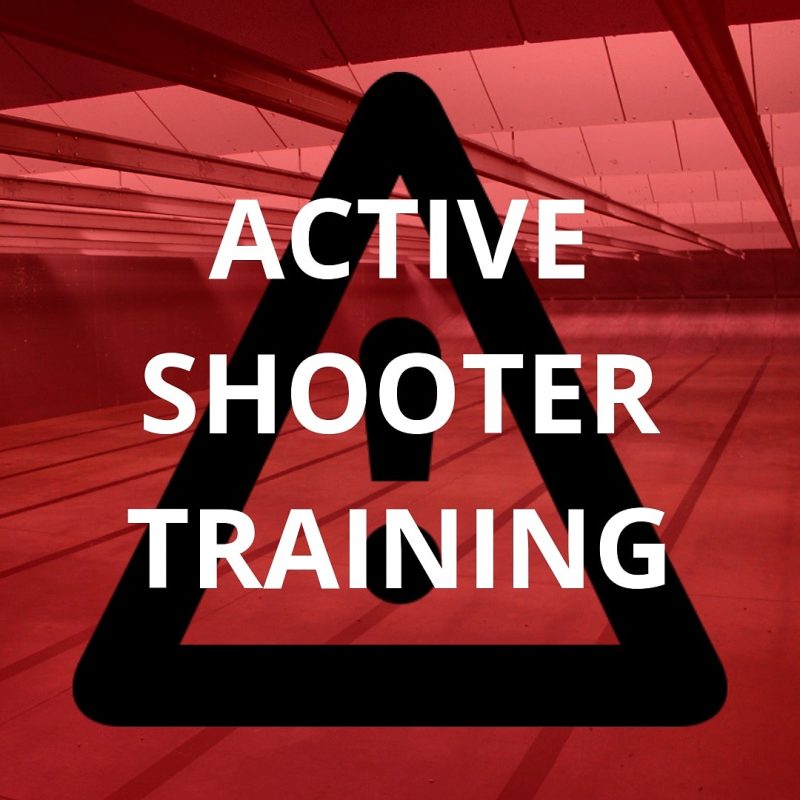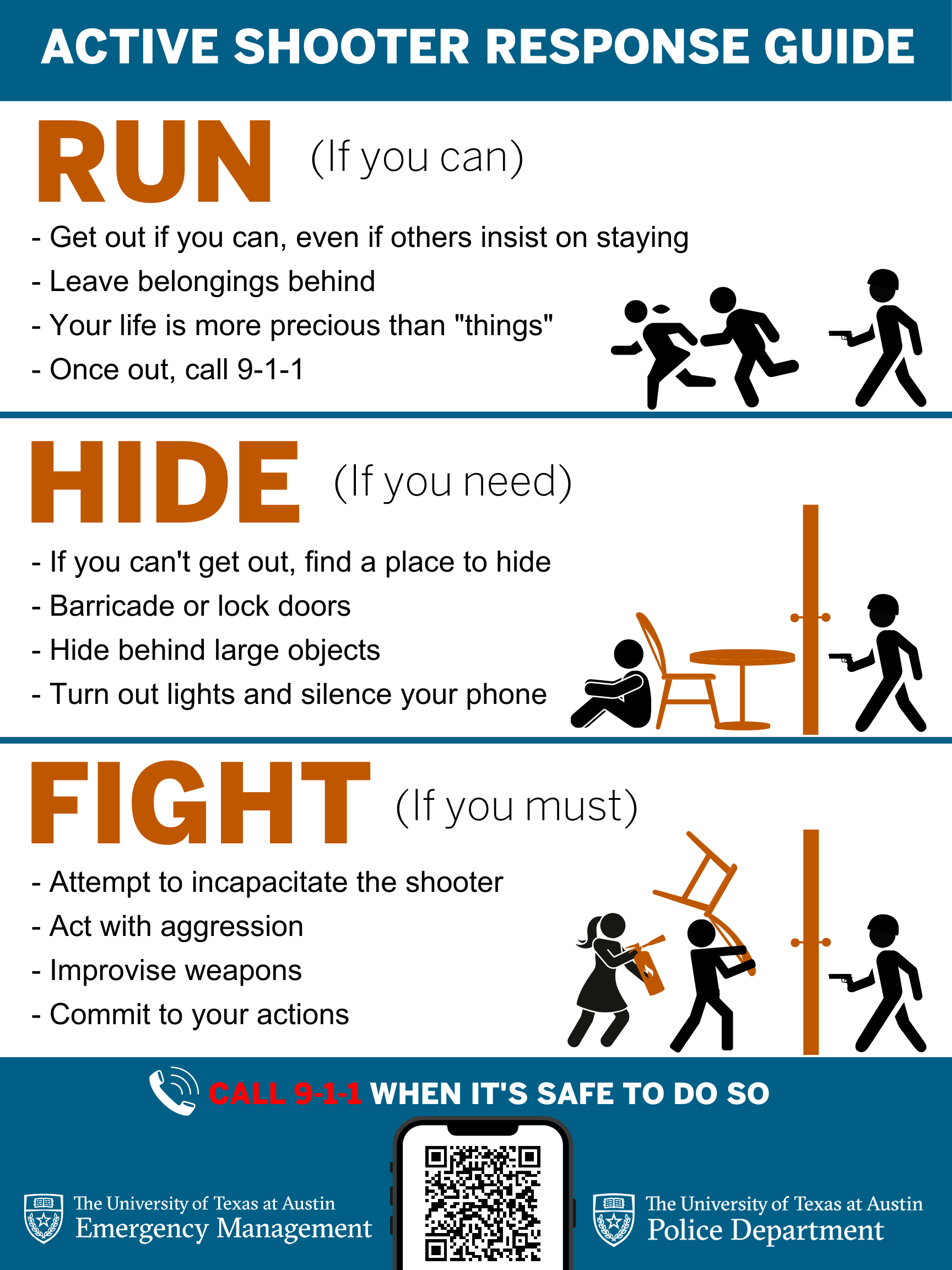Why Active Shooter Training Is Important for Office Safety And Security
Why Active Shooter Training Is Important for Office Safety And Security
Blog Article
Checking Out the Key Parts and Objectives of Efficient Active Shooter Training Programs
Active shooter training programs are crucial in furnishing individuals and companies with the necessary skills to respond successfully to prospective hazards. These programs integrate vital elements, such as the "Run, Hide, Fight" technique, realistic scenario simulations, and communication procedures, promoting an atmosphere of readiness. They stress psychological strength to aid individuals browse high-stress scenarios. As we discover the complexities of these training programs, it comes to be noticeable that understanding their detailed nature is crucial to boosting precaution and feedback capabilities. What specific elements absolutely specify their efficiency?
Significance of Active Shooter Training
Active shooter training programs are essential for boosting readiness and response when faced with potential risks. These programs intend to gear up people, companies, and neighborhoods with the expertise and skills necessary to efficiently reply to energetic shooter circumstances. The enhancing frequency and intensity of such events emphasize the relevance of proactive measures, as timely and enlightened feedbacks can dramatically minimize injury.
Furthermore, active shooter training cultivates a society of safety and security and awareness within institutions, whether they be institutions, work environments, or public venues. Participants find out to identify early indication and understand the relevance of interaction and teamwork throughout emergency situations. This training not just emphasizes individual security however likewise advertises a cumulative obligation to shield others.
Additionally, these programs can help ease the stress and anxiety and concern that usually come with discussions regarding possible risks. By giving structured advice and functional strategies, individuals acquire confidence in their capacity to react suitably. Eventually, the significance of active shooter training lies in its prospective to conserve lives, reduce injuries, and grow a ready and resilient area with the ability of facing unpredicted obstacles.
Key Parts of Training Programs
Efficient energetic shooter training programs usually include a number of vital components created to prepare individuals for real-world situations. The initial part is extensive education and learning on the nature of energetic shooter events, including statistics, study, and psychological aspects that affect assailants. This academic structure is important for cultivating awareness and understanding amongst individuals.
Following, programs usually include training on personal security steps, stressing the "Run, Hide, Fight" approach. Participants learn how to assess their setting, make fast decisions, and take ideal activities during a crisis. Additionally, the inclusion of reliable interaction skills is important, as individuals need to comprehend just how to report cases and share important information with regulation enforcement.
An additional vital element is the participation of law enforcement or security professionals, that provide insights right into tactical responses and the importance of cooperation throughout a dilemma. Programs need to deal with the emotional consequences of an energetic shooter circumstance, supplying approaches for dealing and recuperation.
Last but not least, recurring training and correspondence course are important to guarantee that expertise remains existing and individuals feel great in their capabilities. Together, these essential elements develop an all-round training program that outfits people to react efficiently to an active shooter event.
Realistic Scenario Simulations
Sensible circumstance simulations are a critical aspect of active shooter training programs, providing participants with the possibility to engage in hands-on practice that mirrors prospective real-life circumstances. These simulations boost the training experience by producing an immersive environment where individuals can apply academic understanding in useful setups.
Via using role-playing, simulated scenarios, and specialized training facilities, individuals experience the immediate difficulties and stress factors related to an energetic shooter incident. This approach of training advertises fast decision-making, teamwork, and the application of safety and security protocols under pressure. It allows responders to establish critical skills such as situational recognition, hazard analysis, and effective evacuation treatments.
In addition, sensible simulations assist to identify possible weaknesses in participants' reactions, making it possible for fitness instructors to supply targeted comments and improve general preparedness. The unification of varying circumstances, consisting of different places and attacker accounts, better enhances the training experience, ensuring click that participants are fully equipped to take care of a range of possible scenarios.
Ultimately, these simulations serve not just to instruct however also to construct confidence amongst participants, promoting a feeling of readiness that is vital for efficient emergency feedback despite an active shooter danger.
Communication Approaches in Training
Clear interaction is important in energetic shooter training programs, as it straight affects the efficiency of action efforts during a dilemma. active shooter check training. Training participants must understand the protocols and procedures that will lead their activities if encountered with an active shooter scenario. Developing clear lines of communication ensures that all people involved can relay info quickly and properly

Furthermore, training programs ought to highlight the importance of energetic listening. Individuals should be educated to translate and react to info efficiently, decreasing misunderstandings that could cause hazardous scenarios. Regular responses sessions post-training can likewise improve communication strategies, making sure that all participants really feel equipped to share their experiences and recommendations for improvement. Inevitably, reliable communication methods are essential for preparing individuals to react decisively and cohesively despite an active shooter occurrence.

Psychological Preparedness Techniques
Psychological readiness techniques are significantly acknowledged as vital parts of active shooter training programs - active shooter training. These methods intend to gear up individuals with the psychological resilience required to react properly in high-stress situations. By cultivating an attitude attuned to possible dangers, participants can view better take care of concern, anxiousness, and confusion during critical incidents
Key psychological readiness approaches include scenario-based training and stress shot exercises. Scenario-based training immerses individuals in realistic simulations that imitate the mayhem of an active shooter event, enabling them to exercise decision-making under pressure. This exposure helps construct knowledge with emergency methods, improving second-nature feedbacks.
Stress shot entails progressive direct exposure to stress-inducing situations, allowing people to develop coping mechanisms. This can consist of breathing workouts, visualization strategies, and cognitive restructuring to reframe adverse thoughts. By incorporating these techniques, training programs can cultivate a feeling of self-confidence and control, which is vital in situation situations.
Furthermore, post-incident psychological support is crucial to attend to the emotional after-effects of an active shooter event. Incorporating mental health sources right into training programs not only prepares people for instant responses but additionally promotes long-lasting emotional wellness, ultimately contributing to a safer and extra resilient environment.
Conclusion
In conclusion, effective active shooter training programs are essential for enhancing readiness and feedback capabilities despite potential hazards. By including essential components such as realistic situation simulations, communication methods, and mental preparedness strategies, these programs gear up individuals and organizations with the required abilities to navigate high-stress circumstances. Ultimately, a detailed strategy to training promotes strength and promotes a culture of safety, thus adding to the total safety and security of areas in case of an active shooter event.
Report this page